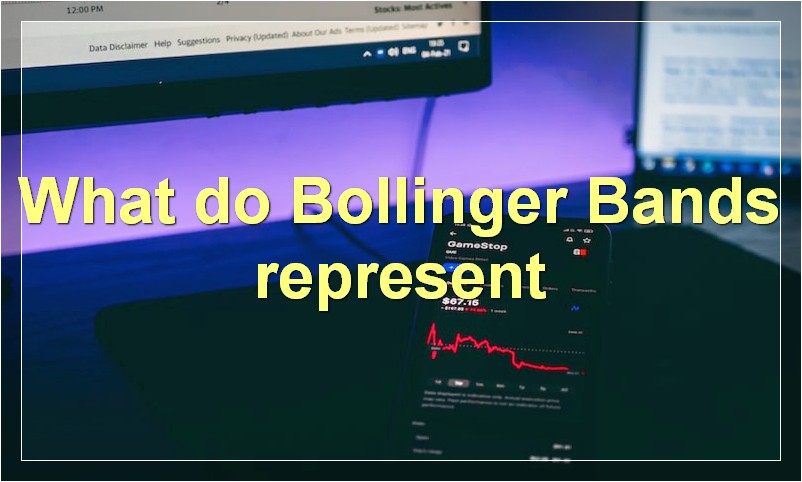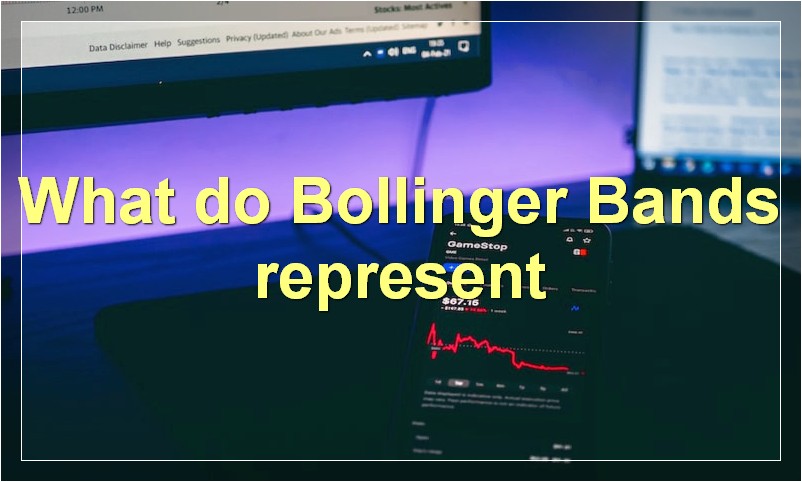If you’re looking to get started with Bollinger Bands, this comprehensive guide is the perfect place to start.
What are Bollinger Bands
Bollinger Bands are a technical analysis tool created by John Bollinger in the 1980s. The bands comprise a moving average (typically 20-period) with upper and lower “bands” that are 2 standard deviations away from the moving average. Bollinger Bands are used to measure market volatility and identify potential entry and exit points.
The basis for Bollinger Bands is a simple moving average (SMA). The SMA is the average price over a certain period of time, typically 20 periods. The upper Bollinger Band is simply the SMA plus two standard deviations, while the lower Bollinger Band is the SMA minus two standard deviations.
Bollinger Bands can be used on any time frame, but they are most often used on daily or weekly charts. One of the key advantages of Bollinger Bands is that they adjust dynamically to changing market conditions.
The Bollinger Band Squeeze occurs when volatility falls to low levels and the Bollinger Bands narrow. A squeeze signals that a breakout may be imminent.
The Bollinger Band Bounce occurs when prices hit the lower Bollinger Band and then rebound higher. This signals that prices have found support at the lower band and may be ready to move higher.
Bollinger Bands are a valuable tool for traders and investors, providing a clear indication of whether prices are high or low on a relative basis. By helping to identify potential entry and exit points, Bollinger Bands can make the difference between profit and loss.
How are Bollinger Bands used

Bollinger Bands are used to measure market volatility. They are created by adding and subtracting a standard deviation from a moving average. The result is a band that contains the vast majority of price action.
Bollinger Bands can be used to identify overbought and oversold conditions, as well as to predict future price movements. When prices are in an uptrend, they tend to stay within the upper Bollinger Band. When prices are in a downtrend, they tend to stay within the lower Bollinger Band.
When prices move outside of the Bollinger Bands, it is called a “Bollinger Bounce.” This often happens after a period of low volatility, and it can be used as a signal to enter or exit a trade.
What is the history of Bollinger Bands
The Bollinger Bands were created by John Bollinger in the 1980s. Bollinger was a former market technician who developed the technique while working as a trader and analyst. The Bollinger Bands are a type of technical analysis that uses a moving average and two standard deviations to create a band around a stock’s price. The idea behind the Bollinger Bands is that prices tend to remain within the upper and lower limits of the band, and only break out when there is a strong move in the market.
Bollinger first started using the technique on monthly charts, but it can be applied to any time frame. The bands are typically set at two standard deviations above and below the 20-period moving average, although this can be adjusted to suit different trading styles. Bollinger himself has said that the bands can be used on any security with historic price data.
The Bollinger Bands are a widely used tool in the financial markets, and they continue to be popular among traders and investors. While they are not infallible, they can be a helpful tool in identifying potential breakouts and trends in the market.
Who created Bollinger Bands
Bollinger Bands were created by John Bollinger in the 1980s. Bollinger Bands are a technical analysis tool that consists of three bands: an upper band, a lower band, and a middle band. The middle band is a simple moving average, while the upper and lower bands are calculated using standard deviation. Bollinger Bands are used to measure volatility and predict future price movements.
How are Bollinger Bands calculated
Bollinger Bands are calculated by taking a moving average of the stock price and adding and subtracting a standard deviation to create upper and lower limits. The standard deviation is a measure of how much the stock price fluctuates. The upper and lower limits are used to create a range that the stock price is likely to stay within. Bollinger Bands are a helpful tool for traders because they can show when a stock is overbought or oversold. They can also be used to spot trends.
What do Bollinger Bands represent

Bollinger Bands are one of the most popular technical indicators used by traders. They were developed by John Bollinger in the 1980s and they use a statistical measure known as standard deviation to help you measure market volatility.
Bollinger Bands have three components:
1. The upper band
2. The middle band
3. The lower band
The upper and lower bands are typically 2 standard deviations away from the middle band. This means that 95% of the time, price will be between the upper and lower bands.
The middle band is simply a moving average of price. The most common moving average used is the 20-period moving average.
Bollinger Bands can be used to trade a variety of markets including stocks, futures, and currencies.
What is the meaning of Bollinger Bandwidth
A Bollinger Bandwidth is a technical indicator that measures the percentage difference between the upper and lower Bollinger Bands. This indicator can be used to identify periods of high and low volatility in the market. When the market is in a period of high volatility, the Bollinger Bandwidth will be at its highest level. Conversely, when the market is in a period of low volatility, the Bollinger Bandwidth will be at its lowest level.
What is a Bollinger Band squeeze
A Bollinger Band squeeze is when the Bollinger Bands (upper and lower volatility bands) come together to form a tight trading range. This signals a period of low volatility and is often followed by a period of high volatility. Bollinger Band squeezes can be used to identify potential breakout opportunities.
What is the difference between Bollinger Bands and envelopes
Bollinger Bands are a technical analysis tool that is used to measure market volatility. Envelopes are a similar tool that is used to measure price movements.
The main difference between Bollinger Bands and envelopes is that Bollinger Bands are based on standard deviations, while envelopes are based on moving averages. This means that Bollinger Bands will be more responsive to changes in volatility, while envelopes will be more responsive to changes in price.
Both Bollinger Bands and envelopes can be used to generate buy and sell signals. However, because of their different construction, they will often give different signals. As such, it is important to use both indicators in conjunction with each other to get a more complete picture of the market.
What are some common Bollinger Band strategies
Bollinger Bands are a technical analysis tool that are used to measure market volatility. They are created by using a moving average and two Standard Deviation bands, one above and one below the moving average. Bollinger Bands can be used to identify trends, as well as potential entry and exit points for trades. Some common Bollinger Band strategies include using the bands to identify overbought or oversold conditions, as well as using them to trade price breakouts.

